Set by a tranquil lake in China, this hotel by WJ Studio aims to transport the guest away from the stresses of modern city life.
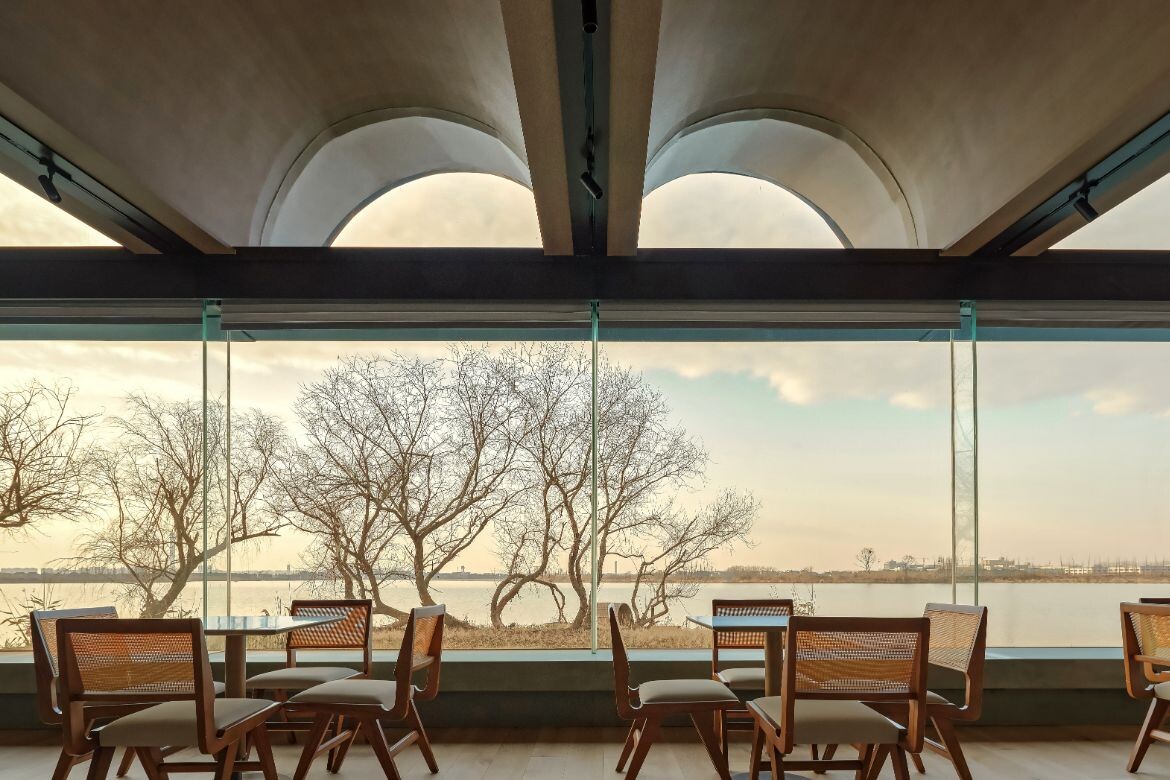
December 6th, 2023
This story originally appeared in INDESIGN #90, the ‘City Futures’ issue – get your copy here.
With Chinese cities exponentially growing in both size and population (at 29 million, Shanghai has increased by three million in the last three years), city dwellers are increasingly looking to rural China for that quintessential luxury: space.
Located a little over an hour west of Shanghai, Boatyard Hotel,\ is idyllically placed among the river systems and lakes of Shanwan village to offer guests views, air, water and that all-important sense of pervading calm. Commissioned by Suzhou Blue City Cultural Tourism Co, as part of the prime pilot region for Green and Integrated ecological development in the Yangtze River Delta proposal, the hotel is key to a rural revitalisation scheme. In-keeping with this ethos, the adjacent rural village is undergoing restoration to be preserved as part of the hotel precinct.

Collaboratively conceived by GOA and WJ Studio the group of high and low arched roofs form a colony, akin to “ships docked on the waterfront of the rising mountains,” according to Hu Zhile from WJ Studio. Quite correct in his appraisal, Boatyard Hotel boasts a uniquely elegant symmetry of form and nature: “A floating island with a few dead trees stretches as if to welcome and detail the passage of time. The hotel building is integrated with the surrounding natural landscape.”
Arranged as a series of interwoven, outward-facing cones, the form is sinuous and fluid. Countering this is the long stone clad geometric volume and cluster of elongated pyramid forms with filigree cladding to give a birdcage transparency of the precinct’s public restaurant and counterpart to the private hotel. And while exemplary, it is the conical forms of the hotel proper that delight.

Equating the architectural forms to calligraphy, Zhile set out to invest the space with rhythm and spatial-temporal experience: “The rippling black-roofed buildings are like the crow-top boats gathered and docked on the shore, sometimes melodious, sometimes serene and moving, becoming the finishing touch to the ink painting on the shore. When people come to this place longing for the idyllic scenery of the water village, they do not know that they have already become a member of this scenery.” Giving the forms a precise and streamlined presence, the dull black metal cladding sharply defines the open ends, while allowing the closed ends a naturally recessive nature.
Related: Boatyard Hotel at the World Architecture Festival
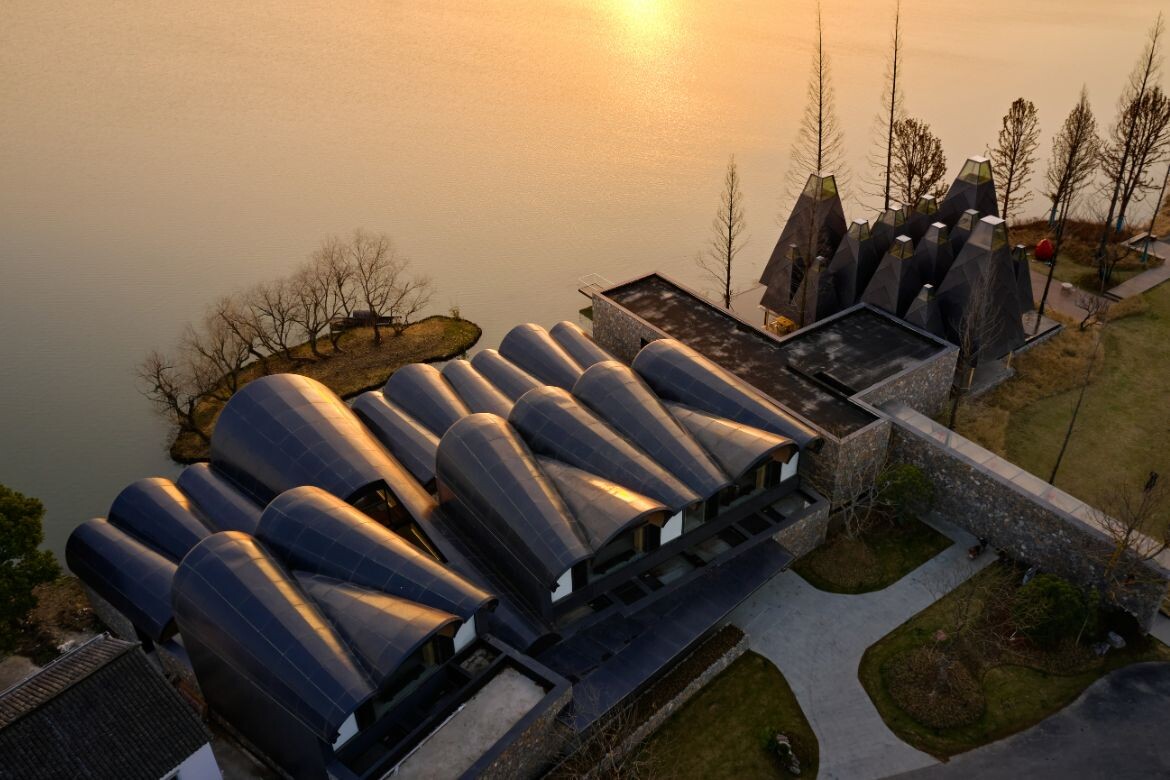
This is echoed in the interior where high curved ceilings give each room a voluminous sense of space, while framing the view across the floating island and waterways of Zhongjadang Lake beyond. Arranged as two layers, the ground level public spaces have the more intimate relationship with the island. From this aspect the island’s copse of trees gives the eye pause before the large expanse of water, and is the primary feature of the view, particularly at sunset when the Western aspect plays orange and gold across the entire lake.
“A three-dimensional space embraces things growing, evolving and intersecting while time moves forward like a river. The images one captures in each moment are instantaneous landscapes – nature, fields, light and artificial design meet at the intersection of space and time,” says Zhile.
A wall of river stone raises the height of the lower floors of guest accommodation to better frame the view and instil the sense of space more potently. This is true of both water and forest facing accommodation and it should be noted that the views facing inland are sublimely beautiful, far reaching and deeply engaged with the region’s seasonality. The upper floor rooms look across the curved roof lines and, while more architecturally engaged with the building, are not as connected to the view as those below.
The guest rooms are for the most part long, high ceilinged spaces below a single arc, with the bed placed at the picture window for optimal view. Alternatively, guests can select a configuration whereby a large sunken bath is located in the window room to give bathers the sense of being in a boat on the lake. When rooms are at the juncture of two arcs the central wall falls short of the arc nadir by a metre to allow for a long aperture over the stair void between.
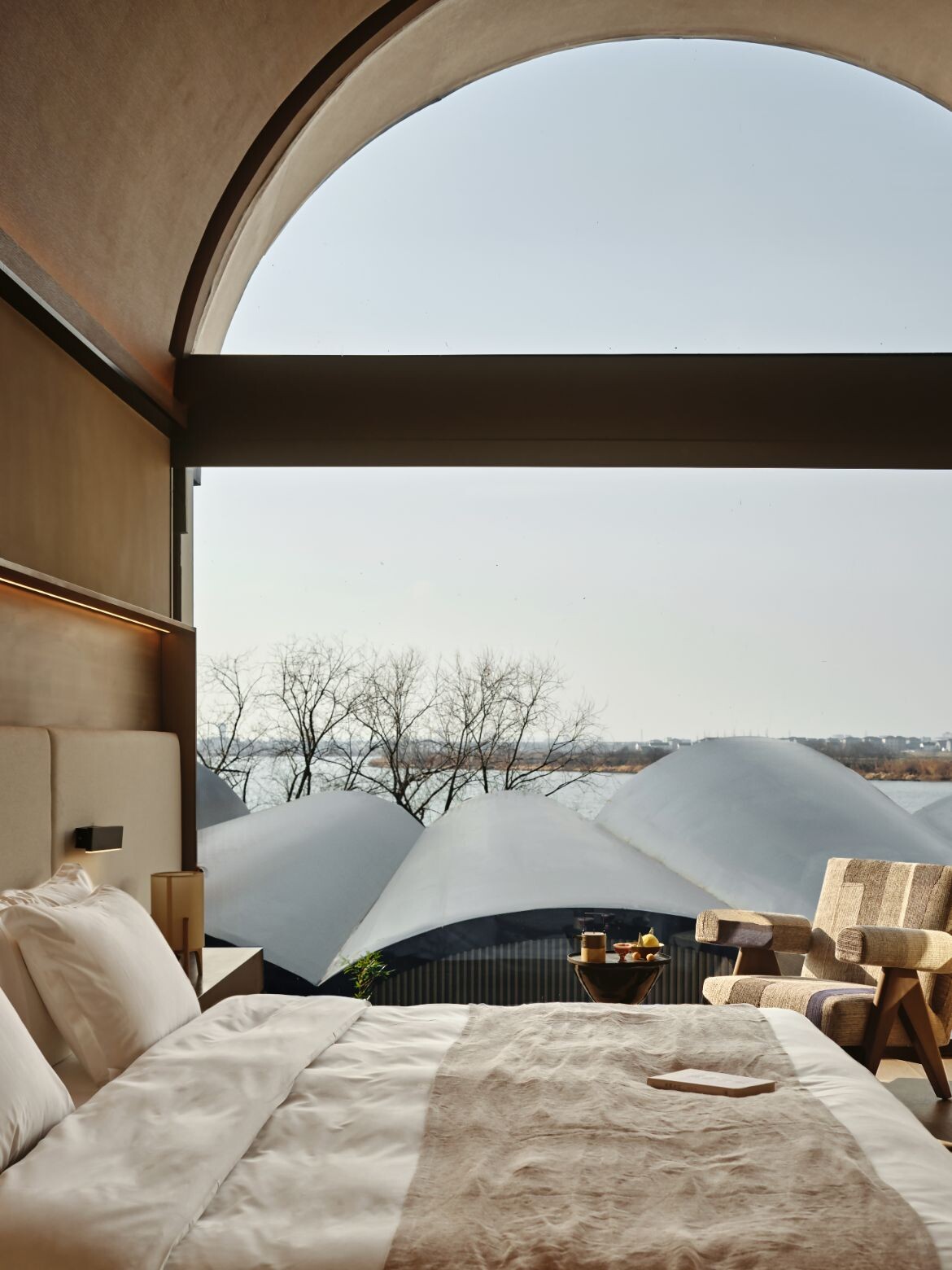
Materiality is natural and refined with the arced ceilings lined in honey toned timber over pale cream walls. Rattan screens, jute rugs, timber detailing and a mix of timber and sand coloured stone floors are broken by bespoke furniture of the mid-century ilk in a slightly darker timber with caramel toned upholstery and textiles. Meanwhile, interior detailing for the public spaces is materially minimal with subtle shifts in stone.
textures, realised as nuanced geometric repetitions across the walls, while floors offer a clear expanse of pale stone. The same honey tones are revisited for the interior of the much larger arc of the reception area and smaller rhythmic arrangement of the hotel’s restaurant. The restaurant speaks again to the ideal of space as a luxury with relaxed timber and woven cane chairs spread out along the vast wall of sliding glass panels facing the lake.
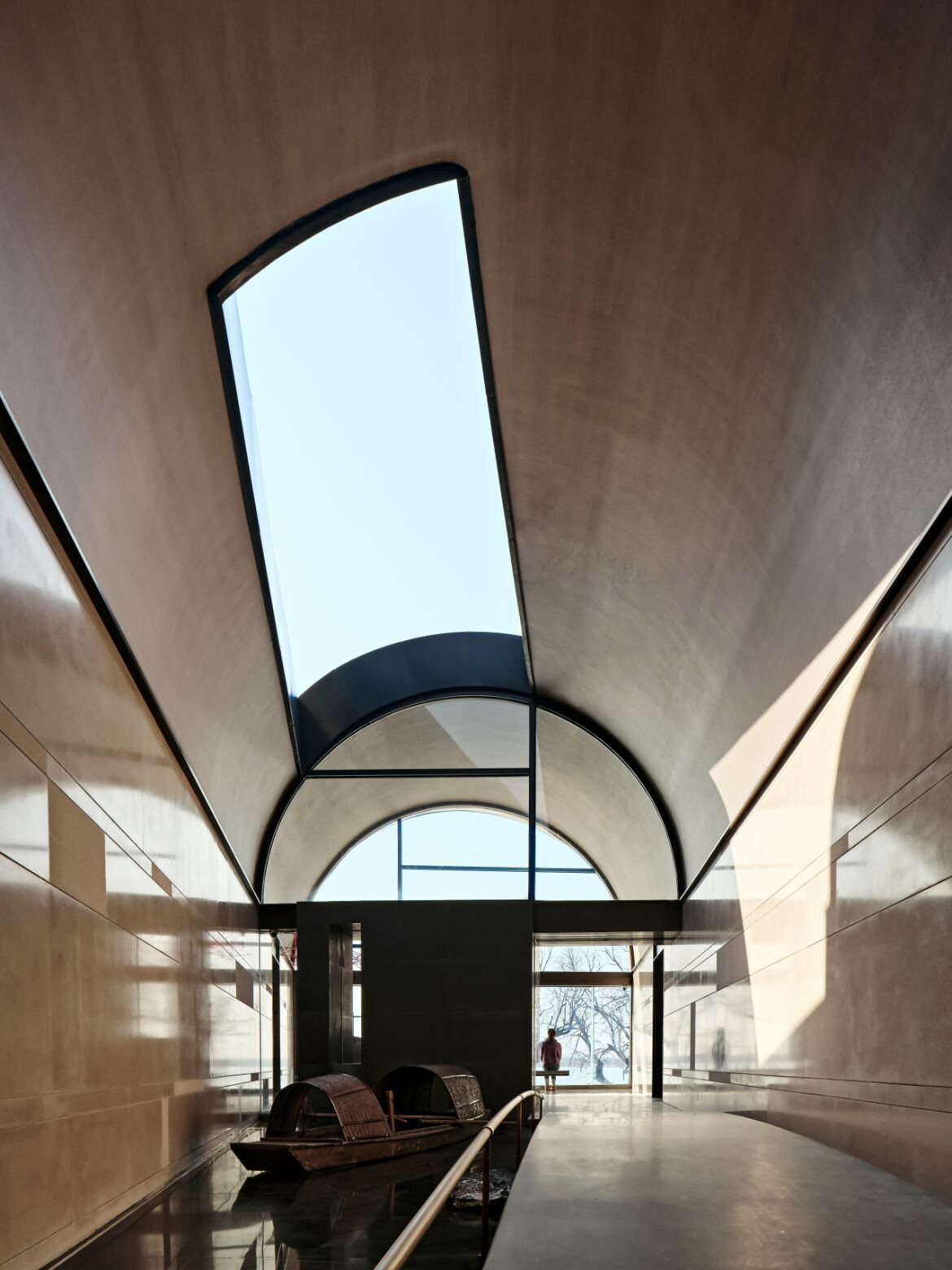
To the side of reception, the form of the architecture and landscaping is cut inwards so that the lake, and an arc roofed boat, enters the building. A glass-walled walkway and bridge allow guests to enjoy this space, particularly when it rains and the colours of the natural local stone are revealed.
“If it rains, the water droplets keep falling on the canopy, and the scenic rocks and Jiangnan’s unique sound and colour are revealed in this area alone,” says Zhile. It is this attention to visitor experience that makes Boatyard Hotel the antidote to city living. As Zhile explains, spaces have been created to exclude the chaos of life and work, where in its stead a calm and poignant moment of reflection can bloom – “like sitting in a boat and looking out, empty of all things, free of distractions and temporarily insulated from the world’s affairs.” Bliss.
Find out more about INDESIGN #90 and susbcribe here!
WJ Studio
wjstudio.cn
Photography
Zhu Hai and Zhang Xi
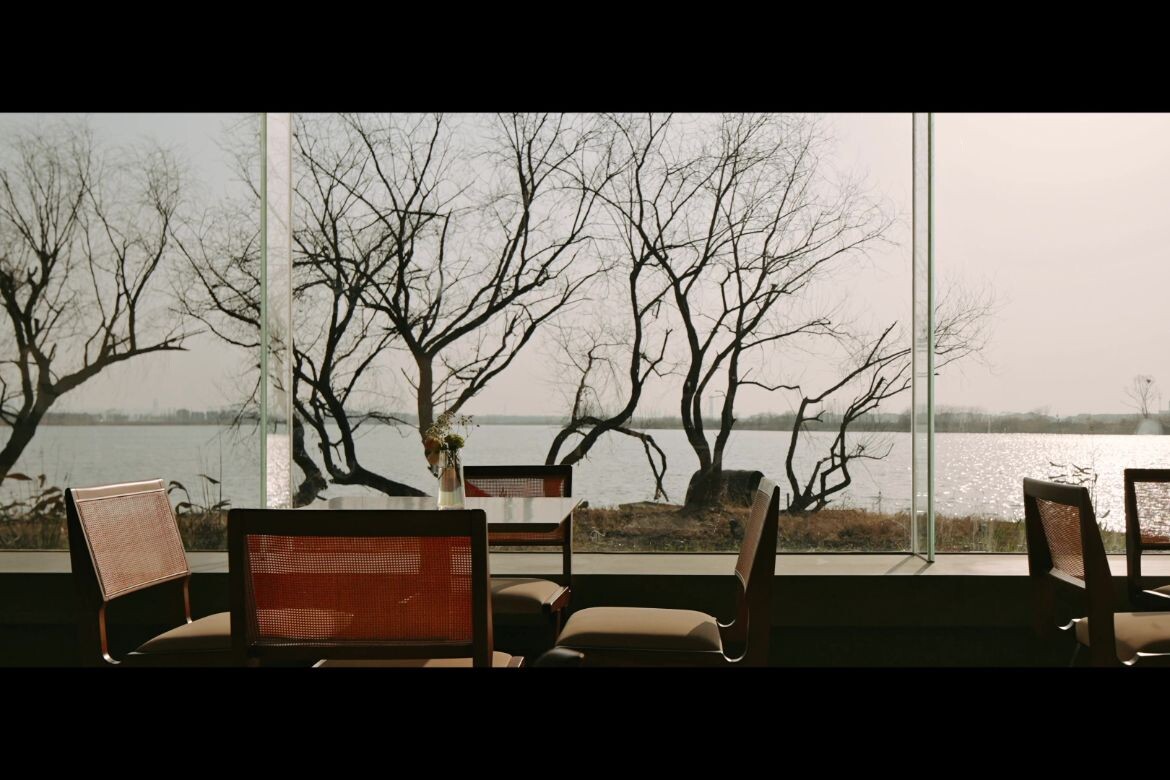
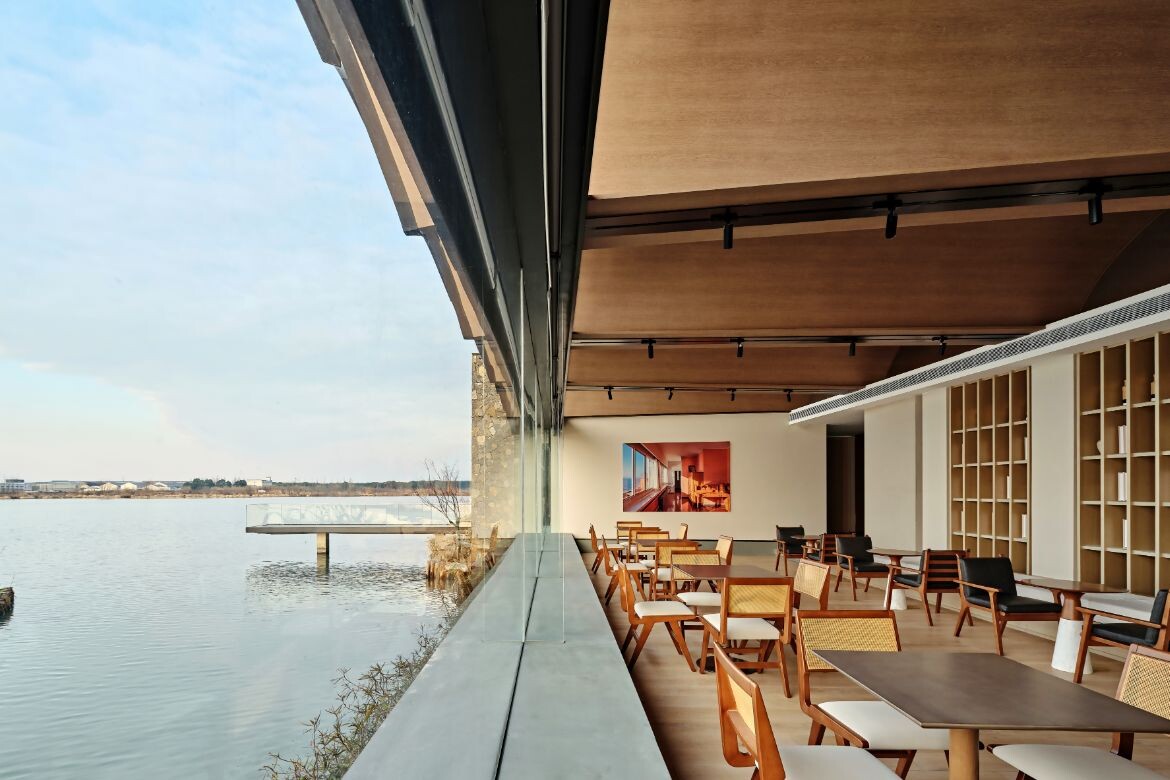



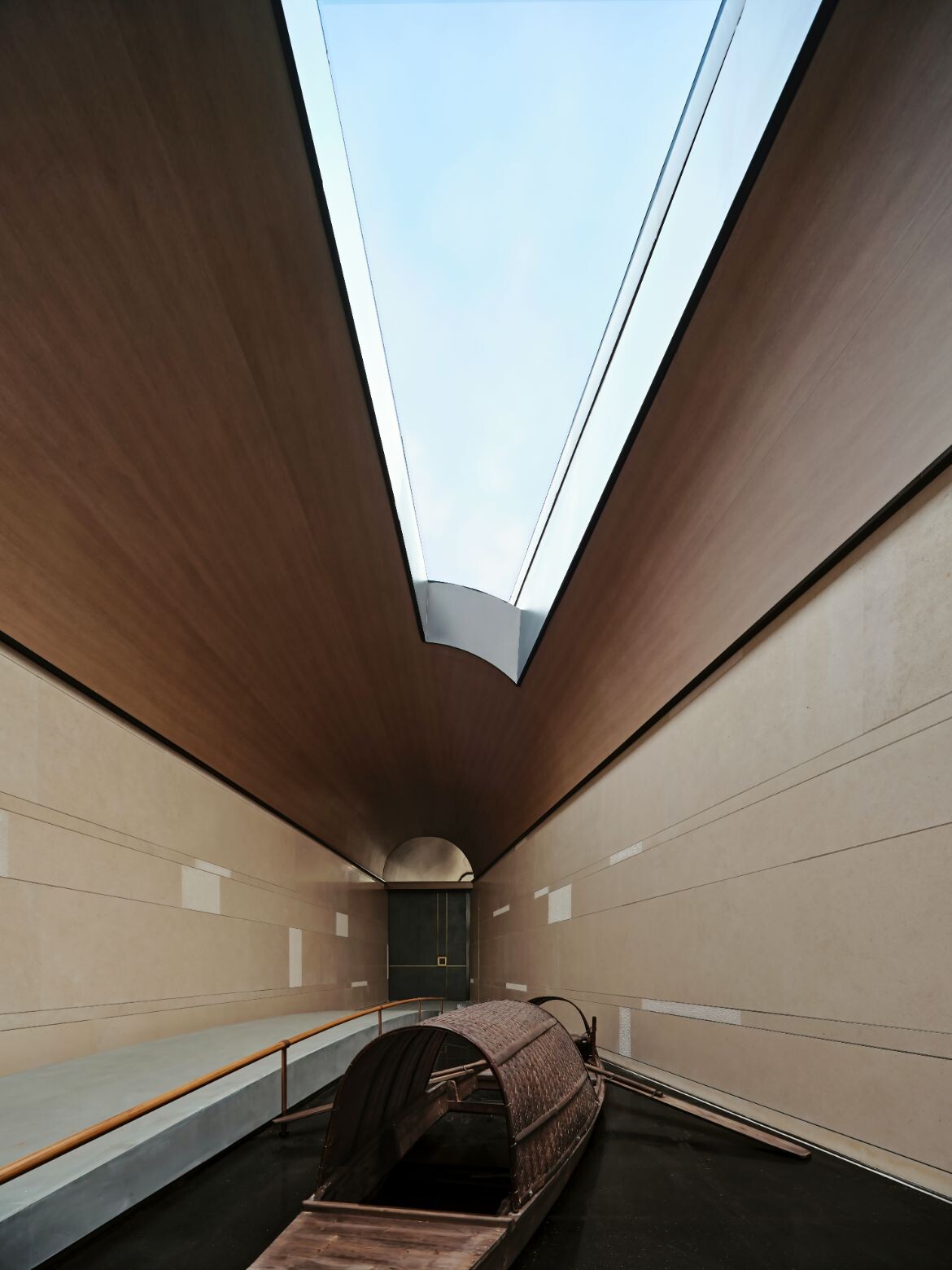


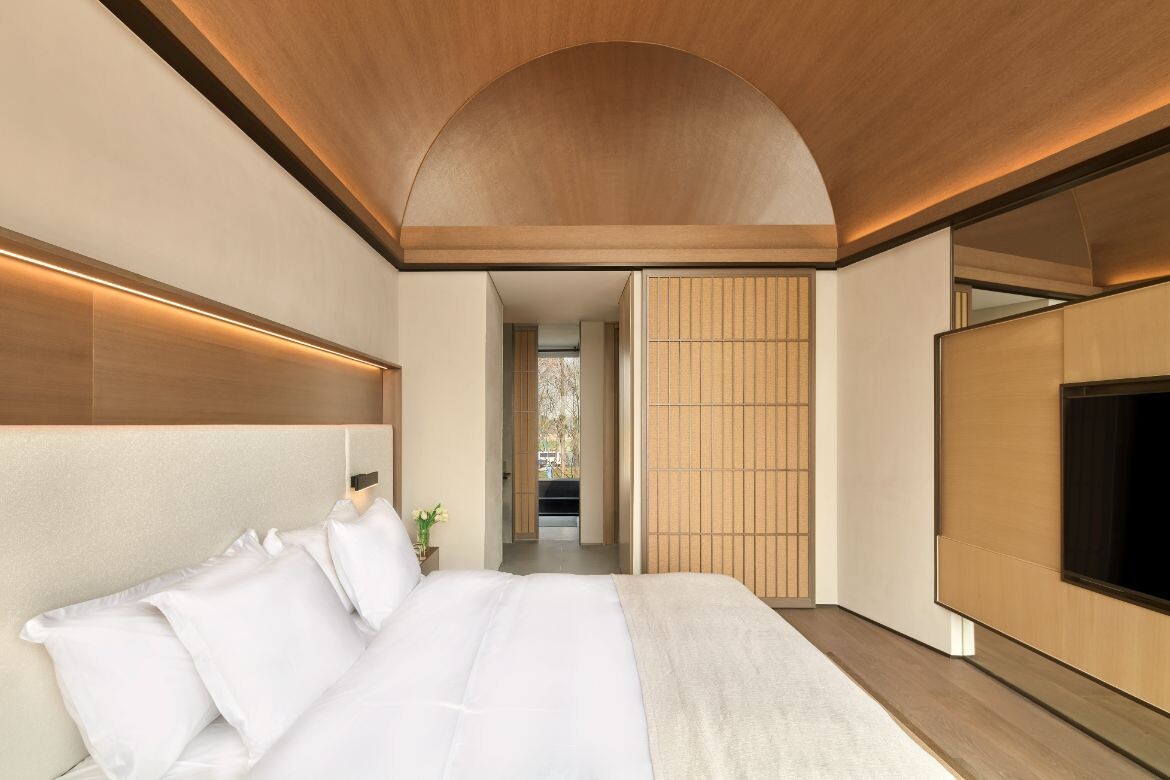

We think you might also like this profile of architect Kristen Whittle, also from INDESIGN #90.
INDESIGN is on instagram
Follow @indesignlive
A searchable and comprehensive guide for specifying leading products and their suppliers
Keep up to date with the latest and greatest from our industry BFF's!

It’s widely accepted that nature – the original, most accomplished design blueprint – cannot be improved upon. But the exclusive Crypton Leather range proves that it can undoubtedly be enhanced, augmented and extended, signalling a new era of limitless organic materiality.

Gaggenau’s understated appliance fuses a carefully calibrated aesthetic of deliberate subtraction with an intuitive dynamism of culinary fluidity, unveiling a delightfully unrestricted spectrum of high-performing creativity.

A curated exhibition in Frederiksstaden captures the spirit of Australian design

How can design empower the individual in a workplace transforming from a place to an activity? Here, Design Director Joel Sampson reveals how prioritising human needs – including agency, privacy, pause and connection – and leveraging responsive spatial solutions like the Herman Miller Bay Work Pod is key to crafting engaging and radically inclusive hybrid environments.

Melbourne is the destination and Saturday 6th September is the date – get ready for this year’s one-day design extravaganza with a full guide to what’s on.

‘What a Ripper!’ by comedian and architecture advocate Tim Ross explores Australia’s rich legacy of local product design.
The internet never sleeps! Here's the stuff you might have missed

The 2025 INDE.Awards winners were celebrated at the annual Gala in Sydney on 31st July.

Architectus Principals Simone Oliver and Patricia Bondin are set to speak at WORKTECH Sydney this year, so we asked them for some sneaky early insights on workplace design.